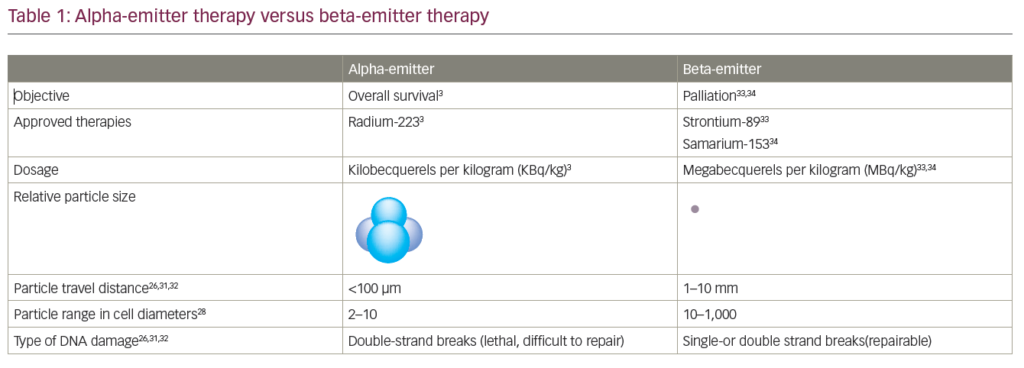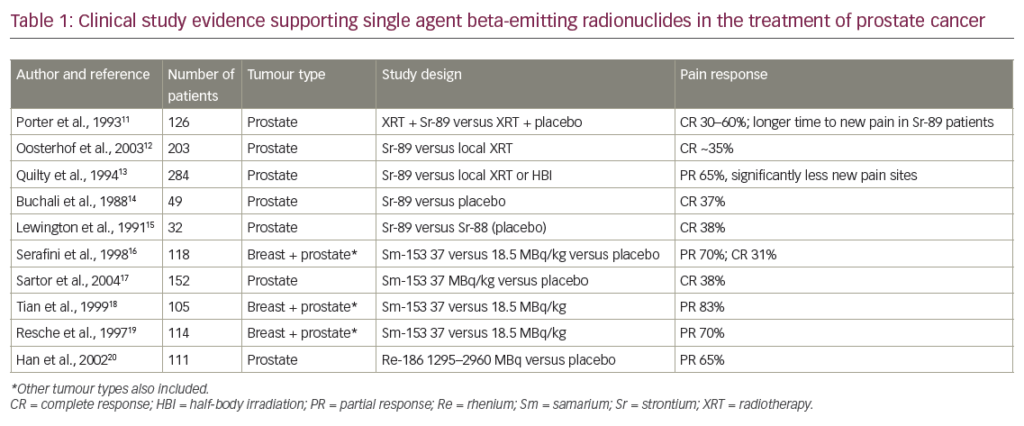The incidence of prostate cancer has increased substantially in many countries over the last few decades. Fifteen to 20 years ago, the probability that a man would be diagnosed with prostate cancer was 4% to 6% in most industrialised countries but, currently, 17% of men in the US and 5% to 10% in Europe are expected to be diagnosed with this disease during their lifetime. At the same time, mortality has remained fairly constant ranging from 2% to 3.5% in various countries.1,2 Thus, prostate cancer is a serious health problem. To reduce morbidity and mortality, opportunistic screening based on determination of prostatespecific antigen (PSA) in serum is increasingly used.
Long-term studies utilising serum bank samples have shown that serum PSA starts to increase over the commonly used cut-off of 4μg/l already five to 10 years before prostate cancer surfaces clinically.3,4 At this stage most prostate cancers are clinically localised and potentially curable by radical therapy.5
However, 25% to 30% of the patients with clinically localised disease will experience a clinical or a biochemical relapse, i.e. increasing PSA levels in serum.6 Therefore, some centres have lowered the cut-off to 2.5 to 3μg/l in order to catch cancer at an even earlier stage.5,7–9 While this will increase the likelihood of cure it will also increase overdiagnosis, which, with screening every fourth year, is estimated to be around 50%,10 but it may actually be higher.
The high rate of over-diagnosis is explained by the slow development of most prostate cancers and the high prevalence of subclinical disease. Because of this slow development it takes on average 17 years from an increase in serum PSA over 4μg/l before a conservatively treated prostate cancer becomes lethal.4
The prevalence of occult tumours has been studied by examination of prostates removed at autopsy and this reveals a cancer in about half of all men aged 60 years old, and in three-quarters of those aged 70 to 80 years old.11 The vast majority of the occult tumours will never surface clinically, but many of them are now detected as a result of opportunistic screening. The probability that an occult tumour will develop into clinical disease is strongly related to the level of PSA in serum. Thus, the time it takes for a tumour to develop into clinical disease is longer the lower the PSA level.
Therefore, early detection and treatment of small prostate cancers in elderly men is not likely to provide a survival benefit. On the basis of a serum bank study it was calculated that screening of men over 65 years of age would not reduce disease-specific mortality4 and this was actually verified in a randomised study on radical prostatectomy versus watchful waiting. However, in younger men, therapy caused a significant reduction in disease-specific mortality.12
There is no generally accepted strategy for prostate cancer detection; various expert groups have issued recommendations both for and against screening. Irrespective of the recommendations, PSA testing is increasingly used, and in some countries this has caused a dramatic increase in prostate cancer incidence, e.g. in Finland the increase has been three-fold over the last 15 years.13
It is too early to evaluate the outcome of the present prostate cancer detection strategies but there are reasons to suspect that they are not optimal; it is obvious that harmless tumours are over-diagnosed while many aggressive cancers are not being cured.
The results from the on-going European Randomized Screening for Prostate Cancer (ERSPC) will help to improve strategies but it will take at least five more years before the results are available. Meanwhile, attempts to improve strategies should be made on the basis of currently available data.
The challenge is to identify young men with aggressive cancers at an earlier and more curable stage while avoiding diagnosing elderly men with harmless tumours that will not develop into clinical disease during the remaining lifetime. Sufficiently reliable methods of achieving this goal are not available yet, but there is evidence indicating that optimised use of assays of free and total PSA can help move closer to this goal.
PSA is a very reliable marker for management of prostate cancer but its use for early diagnosis is hampered by elevated values in men with benign prostatic hyperplasia (BPH). When used for early detection of prostate cancer, about one-third of all men with a total PSA (tPSA) value above 4μg/l will have a prostate cancer found in biopsy, thus three biopsies are required to find one cancer.
Most of the PSA detected by immunoassays in male serum occurs in complex with α1-antichymotrypsin (PSA-ACT) while 5% to 35% is free. Patients with prostate cancer have a higher proportion of PSA-ACT and a lower proportion of free PSA lower than men with BPH.14,15 For technical reasons the ratio of free to total PSA is easier to determine than that of PSA-ACT to total PSA16 and assays for free PSA are widely available. About 20% of the false positive results caused by BPH can be eliminated by determination of the proportion of free PSA, often called %fPSA.17
The fact that %fPSA can reduce the number of false positive results is well known, but in spite of this clinical decisions are still mainly based on tPSA. However, there are compelling reasons to base the decision more on %fPSA than on tPSA. On the basis of results from the Finnish Randomized Screening Study the average probability of finding a prostate cancer on biopsy is 17% and 32% when tPSA is 4 and 10μg/l, respectively. However, in this tPSA range the probability of prostate cancer is only 2% to 5% when %fPSA is 35% while the probability is 39% to 60% when %fPSA is 7%. Thus, at a certain value of tPSA, changes in %fPSA may cause a more than 10-fold difference in prostate cancer risk. Even when tPSA is 3μg/l, i.e. ‘normal’, the prostate cancer probability is over 17% when %fPSA is below 14%.18
These examples show that we need to pay more attention to %fPSA than is currently done.13 There are other reasons to pay attention to %fPSA. A low %fPSA has been found to be a strong independent risk factor for stage pT3 disease19 and high-grade tumours.20,21 Thus, the use of %fPSA as the main criterion to decide whether biopsy is indicated will favour finding of tumours that threaten the health and life of the patient.
To efficiently use %fPSA it is necessary to utilise risk calculation algorithms; several such algorithms are available freely on the Internet. One algorithm can be downloaded from the website of its author, Patrik Finne (www.finne.org).
This algorithm consists of an Excel formula that utilises tPSA, %fPSA, digital rectal examination (DRE) findings and prostate volume either all together or only those available. The algorithm is based on results from the Finnish Prostate Cancer Screening Trial18 but it has been verified on the basis of results from the ERSPC study,22 thus it is applicable at least in European Caucasians. The algorithm was established with results obtained by the Perkin-Elmer Wallac Prostatus assay for tPSA and fPSA, but this assay, the Beckman Access and the Abbott Architect assays are virtually identically calibrated and results obtained by these can be used with the same algorithm. An algorithm based on the use of the diphenylamine-2-carboxylate (DPC) assays is available on the website of the Charite Hospital in Berlin.
In order to improve detection of prostate cancer earlier in relatively young men, it will be necessary to biopsy those with a tPSA level well below 4μg/l, e.g. 2.5 to 3μg/l, if %fPSA indicates increased risk. So far there is no agreement on which risk warrants biopsy, but the risk associated with the widely used cut-off value 4μg/l can be used as a provisional guideline. Depending on the number of biopsies taken and the clinical setting, the risk at this PSA level is 17% to 25%.13 However, it is obvious that the acceptable risk is highly individual and therefore the patient has to be involved in the decision. A 10% risk may be high for some men while others may accept a 30% risk.
A key question is who should discuss the risk with the patient – whether it should be the primary care physician, who probably orders the first PSA test, or the urologist to whom the patient is referred. One of the aims of the use of risk calculations is to reduce detection of harmless tumours in elderly men. It is therefore important that the problem is discussed with the patient before the PSA test is ordered.
The potential consequences of a PSA result indicating increased risk of prostate cancer should be explained, e.g. a man over 70 years of age who is diagnosed with prostate cancer has a relatively small likelihood of benefiting from this knowledge but without radical therapy, a similar tumour in a 55-year-old man is probably lethal. In most countries men of over 70 years old are not treated radically. Therefore, it is important to ask whether the patient wishes to know if he has a prostate cancer before the test is ordered. If a PSA test is ordered, both tPSA and fPSA should be determined simultaneously. If the estimated risk is acceptable to the patient, no further investigations are necessary. Valuable healthcare resources could be saved if the primary care physician could perform this evaluation.
It is inevitable that some cancers will be missed by basing the decision to do a biopsy on the risk estimated by an algorithm utilising %fPSA and tPSA, but this approach is likely to improve finding of prostate cancers that need to be cured and reduce over-diagnosis, i.e. detection of cancers in patients that would never have been detected without PSA testing.
Adoption of this approach requires that doctors become familiar with and accept the use of risk calculation algorithms. This is becoming increasingly important because patients have access to the Internet and will use the same risk calculation algorithms. ■
My Learning
Login
Sign Up FREE
Register Register
Login
Trending Topic

12 mins
Trending Topic
Developed by Touch
Mark CompleteCompleted
BookmarkBookmarked
Allan A Lima Pereira, Gabriel Lenz, Tiago Biachi de Castria
NEW
Despite being considered a rare type of malignancy, constituting only 3% of all gastrointestinal cancers, the incidence of biliary tract cancers (BTCs) has been increasing worldwide in recent years, with about 20,000 new cases annually only in the USA.1–3 These cancers arise from the biliary epithelium of the small ducts in the periphery of the liver […]
touchREVIEWS in Oncology & Haematology. 2025;21(1):Online ahead of journal publication














